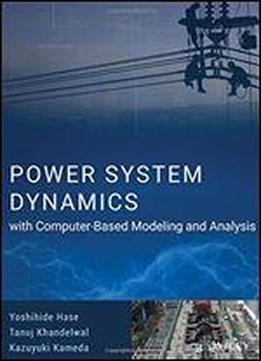
Power System Dynamics With Computer-based Modeling And Analysis
by Yoshihide Hase /
2020 / English / PDF
65.2 MB Download
A unique combination of theoretical knowledge and practical analysis experience Derived from Yoshihide Hases Handbook of Power Systems Engineering, 2nd Edition, this book provides readers with everything they need to know about power system dynamics. Presented in three parts, it covers power system theories, computation theories, and how prevailed engineering platforms can be utilized for various engineering works. It features many illustrations based on ETAP to help explain the knowledge within as much as possible. Recompiling all the chapters from the previous book, Power System Dynamics with Computer Based Modeling and Analysis offers nineteen new and improved content with updated information and all new topics, including two new chapters on circuit analysis which help engineers with non-electrical engineering backgrounds. Topics covered include: Essentials of Electromagnetism Complex Number Notation (Symbolic Method) and Laplace-transform Fault Analysis Based on Symmetrical Components Synchronous Generators Induction-motor Transformer Breaker Arrester Overhead-line Power cable Steady-State/Transient/Dynamic Stability Control governor AVR Directional Distance Relay and R-X Diagram Lightning and Switching Surge Phenomena Insulation Coordination Harmonics Power Electronics Applications (Devices, PE-circuit and Control) and more. Combines computer modeling of power systems, including analysis techniques, from an engineering consultants perspective Uses practical analytical software to help teach how to obtain the relevant data, formulate what-if cases, and convert data analysis into meaningful information Includes mathematical details of power system analysis and power system dynamics Power System Dynamics with Computer-Based Modeling and Analysis will appeal to all power system engineers as well as engineering and electrical engineering students.











